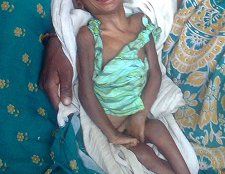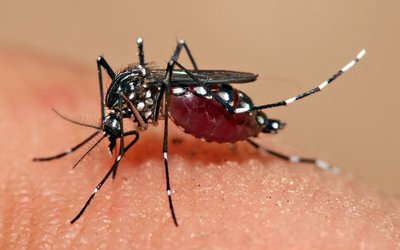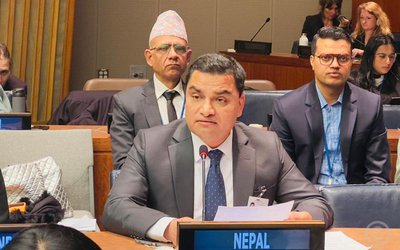
Sushma, the first female child of a Mukhiya family living in Saptari District with a younger brother of 11 month, couldn’t survive more than 2 years. She died because of severely acute malnutrition. Lack of food, ignorance of the treatment and poor feeding practices were identified as the primary causes of disease and death in the community.
A health post at Hanumannagar Saptari diagnosed her as severely malnourished as the two-year old girl weighed barely 4 kg. It was revealed that there was no medical complication at the time of admission. After being diagnosed as severely malnourished, RUTF sachets were provided (according to her weight to cover 7 days of treatment) to her mother along with routine medicine.
Counseling was given to her mother regarding feeding and care practices. The child was called for the follow up visit in a week. When Sushma did not appear in the centre after 1 week, a follow up visit to her home revealed that she was dead.
Sushma is not a lone child dying in early childhood, there are hundreeds of children in Saptari and other districts of Nepal dying due to malnutrition. Along with early death, there are also other problems faced by malnourished children.
Although Sushma died without getting proper treatment, her brother was saved with a timely intervention. Two weeks after Sushma’s death, her mother realized that health status of her younger child (Sushma’s brother) was deteriorating.
She brought him to the centre for check-up. He was diagnosed as severely malnourished. She was more regular this time in the program. Sushma’s brother received the complete treatment and recovered over 8 week’s period. Her mother is very happy now to see the second child getting better after malnutrition. She is now creating awareness in her community on the consequences of malnutrition and helping people save life of more children like Sushma.
According to ACF-Nepal's head of Nutrition and Health Dr. Ojsawi Acharya, there are currently 91,000 children suffering from severe acute malnutrition in Nepal. If ignored and not treated effectively, they can meet the same fate as Sushma. "In Nepal, significant further reduction to child mortality can be achieved by scaling up the coverage of services to address acute malnutrition," said Dr. Acharya.
Government of Nepal, with support of ACF Nepal, a French INGO, has been implementing community based management of acute malnutrition (CMAM), a lifesaving intervention in Saptari district of Nepal for the last 20 months. CMAM programme is treating severely acutely malnourished (SAM) children through its 13 health centers (Primary Health Centre and Health Post), covering entire district. Over the period of 20 months, a total of 3,097 children were saved from early and preventable deaths. These children have been treated and this resulted in the prevention of their death or cognitive impairment. Together with treatment of these SAM children, a mass sensitization program is going on throughout the district regarding prevention and early diagnosis of malnutrition. Counseling and orientation with key health and nutrition messages to mothers and care givers is a core component of the program for the prevention of malnutrition.
Nepal is one of the world's poorest countries, with more than half the population living on less than $1.25 a day. Development has been severely hit by the 10-year civil war between Maoist rebels and state security forces that ended in 2006.
According to government statistics 1.7 million children -- nearly half of all under-fives -- suffer from chronic malnutrition, a long-term condition also known as stunting. The situation in far west is worse. However, the state of Nepal's southern districts too is not different from that of the hills. Saptari's incidents have showed that malnutrition is predominantly high in terai.
Acute malnutrition, a condition known as "wasting" blamed for half of Nepal's infant deaths, is thought to affect 18 percent.
Studies have shown that 25 percent of women that give birth in Nepal do breastfeeding while malnourished. Thus breast milk is often insufficient. Development agencies say nearly a quarter of Nepalese still have no access to even basic health care.
"We call on governments and other relevant stakeholders to recognize acute malnutrition as a leading cause of child death and fully acknowledge that acute malnutrition is an ‘EVERYDAY EMERGENCY’ by including treatment and prevention in long-term health and development programmes," said Dr. Ojaswi Acharya, head of Nutrition and Health ACF-Nepal.
After launching the program by ACF, people have gradually realized the need to feed the children with proper food. However, there is still a long way to in saving all children from the meeting the fate of Sushma.
- MELAMCHI WATER SUPPLY: No Interruption During Monsoon
- Jun 25, 2025
- KOREAN RETURNEES: Successful Integration
- Jun 25, 2025
- UPPER TRISHULI-1: Engaging With Local
- Jun 25, 2025
- IME GROUP: Twenty Five Years Of Journey
- Jun 24, 2025
- NEPAL’S AIR POLLUTION: A Growing Health Concern
- Jun 24, 2025














